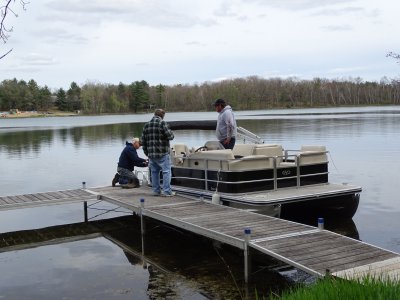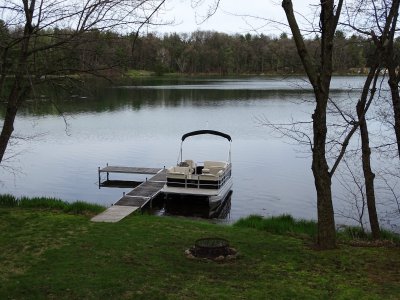- Joined
- Apr 14, 2014
- Messages
- 3,153
One of the projects for this winter is making new decking for the pier at the family cottage. This will be the second time around for new decking. The originals lasted less than 10 years. The first replacement set I made lasted 13 years. In both cases the ends of the deck boards are deteriorating to the point that they have become soft. They will probably last another year, but I don't want to take the chance that one or more might break and injure someone.
The new decking will be made of 5/4" x 6" cedar just like the originals and first set of replacements. In the past the end grain was sealed using a couple coats of brush on sealant. This time I'm considering soaking the end grain in sealer for a period of time to get better penetration, and hopefully longer life. When completed all the boards will get two coats of sealer top and bottom. Other than that, they will be left to weather naturally. In all there will be about a hundred deck boards and an as of yet to be determined number of stringers.
The number of stringers is dependent on whether the sections are 2' or 4' long. In the past each metal framework had two four-foot sections and one two-foot section of decking. We've yet to determine whether we want to duplicate this pattern one more time or go to two-foot sections only. The upside of two-foot sections is that they are easier to install and remove. The downside is they're more prone to displacement due to wind and waves.
My question is: Is soaking the end grain a viable way to attempt to reduce deterioration, and if so, what sealant is best for this application, and how long should the boards be soaked to get maximum penetration?
The new decking will be made of 5/4" x 6" cedar just like the originals and first set of replacements. In the past the end grain was sealed using a couple coats of brush on sealant. This time I'm considering soaking the end grain in sealer for a period of time to get better penetration, and hopefully longer life. When completed all the boards will get two coats of sealer top and bottom. Other than that, they will be left to weather naturally. In all there will be about a hundred deck boards and an as of yet to be determined number of stringers.
The number of stringers is dependent on whether the sections are 2' or 4' long. In the past each metal framework had two four-foot sections and one two-foot section of decking. We've yet to determine whether we want to duplicate this pattern one more time or go to two-foot sections only. The upside of two-foot sections is that they are easier to install and remove. The downside is they're more prone to displacement due to wind and waves.
My question is: Is soaking the end grain a viable way to attempt to reduce deterioration, and if so, what sealant is best for this application, and how long should the boards be soaked to get maximum penetration?



